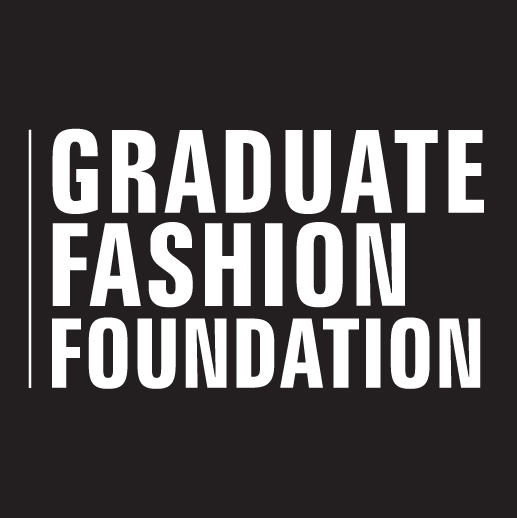This week, to celebrate Fashion Revolution Week, our GFF Talent is Hannah Stote, a final year fashion design student from Bath Spa university. Hannah’s final collection is sustainably-driven knitwear inspired by traditional styles from British fishing villages. Using biodegradable locally sourced wool, Hannah’s pieces can be unraveled and remade into something new — she plans to continue experimenting with innovative knitwear techniques after she graduates.
What was the starting point of inspiration for your final project?
I knew I wanted to do knitwear for my final collection, so I began with looking at knitwear throughout history and became fascinated by the stories surrounding 19th century fishermen’s ganseys, or jumpers. The folklore is that over time each fishing village in the north of England developed their own stitches and patterns for their ganseys and that if a fishermen was lost in the sea, he could be identified by the patterns of his gansey. This idea of identity and craft within such a functional garment really inspired me to think about the value placed on clothes and how that has sort of been lost due to fast fashion.
From then on my research developed organically – from tracing original gansey patterns to find techniques to sample to looking at Frank Sutcliffe’s amazing portraits of northern fishermen in the 1890s to embody the mood of my collection. From then on it was all about developing really textural fabrics that felt like they belonged in that world – knitting mixes of cables and plaits then distressing them with wire brushes, purposely laddering samples to then ‘repair’ with fluffy merino wool top, mixing chunky hand knit and machine knit and washing/felting samples to make it feel like they had spent years in the sea. Wool is such a versatile fibre and experimenting with how it reacts to washing, felting, brushing etc have been one of my favourite parts of developing my final collection.
“Making sure my garments can be recycled and the yarn then go on to have a second or third life is really important to my design process.”
What form will your collection take?
Although in the beginning I only intended to have three or four knitted pieces in my collection, it is now a fully knitted collection for 6 outfits! Although knitwear is usually a winter staple, I wanted my collection to be seasonless, so I made sure to work with both super chunky yarns and lightweight lace yarns, to really create a capsule collection. While knit as a fabric will always have a casual feel to it, I also hope my garments really luxurious too.
How has it evolved from your initial ideas and what have you learnt along the way?
I’d never really done knitwear before this project, so it has been a constant learning curve. I took a month long machine knit to learn the techniques of machine knitting, but until you start developing your own fabrics and modelling them on the mannequin you don’t really understand what it means to design knitwear. The biggest thing I learnt was to let the knit do what it wants – knitted fabrics can’t be forced in the same way as woven fabrics can and it took me a while to understand that when I was designing. But the attraction of creating your own fabric outweighed all of that and I loved seeing how textural and dynamic I could make my fabrics.
I also knew I wanted sustainability and responsible design to be a really important part of my collection so I started sourcing my materials really early on. I focused on using 100% wool yarns, as wool is biodegradable and a renewable resource, and sourcing yarns from British sheep helps to support the British wool industry. Traceability in production is a real issue in the fashion industry so I wanted to make sure I knew where the yarns for my final collection came from. All my final pieces are also fully fashioned on the knitting machine, which means that not only is next to no yarn wastage, all my pieces can be easily unravelled and re-knitted into new clothes. I did my dissertation on waste in the fashion industry and found that because there isn’t a good infrastructure for recycling clothes, things such as difficult to remove fastenings and bad construction mean clothes are thrown away rather than attempted to be recycling. Making sure my garments can be recycled and the yarn then go on to have a second or third life is really important to my design process.
What is the message behind your project that you want people to take away?
I want people to consider the value behind their clothes when they see my work and appreciate the craftsmanship behind fashion – we’re so disconnected to how our clothes are made we don’t value them like we should. I hand or machine knit all my pieces myself and it can take me days just to knit all the pieces, let alone construct them and add the finishing details. For me, that investment of time during creation really becomes part of the garment’s story and makes the pieces so much more than just clothes – I hope other people can see that in my work too.
What is your plan once you finish your BA?
I’d love to spend more time learning about and experimenting with knitting, so I may choose to do an MA. I want to spend more time learning about how knitwear design is integrated into the industry and what part I can be in that – I love the making and experimentation of samples, so I want that to be a part of my future job. Whatever I do, I want to work for a company that has sustainable and ethical values at the forefront of their work – if I’m going to be putting more clothes out into the world, they should be ones with the least amount of impact on the planet.











